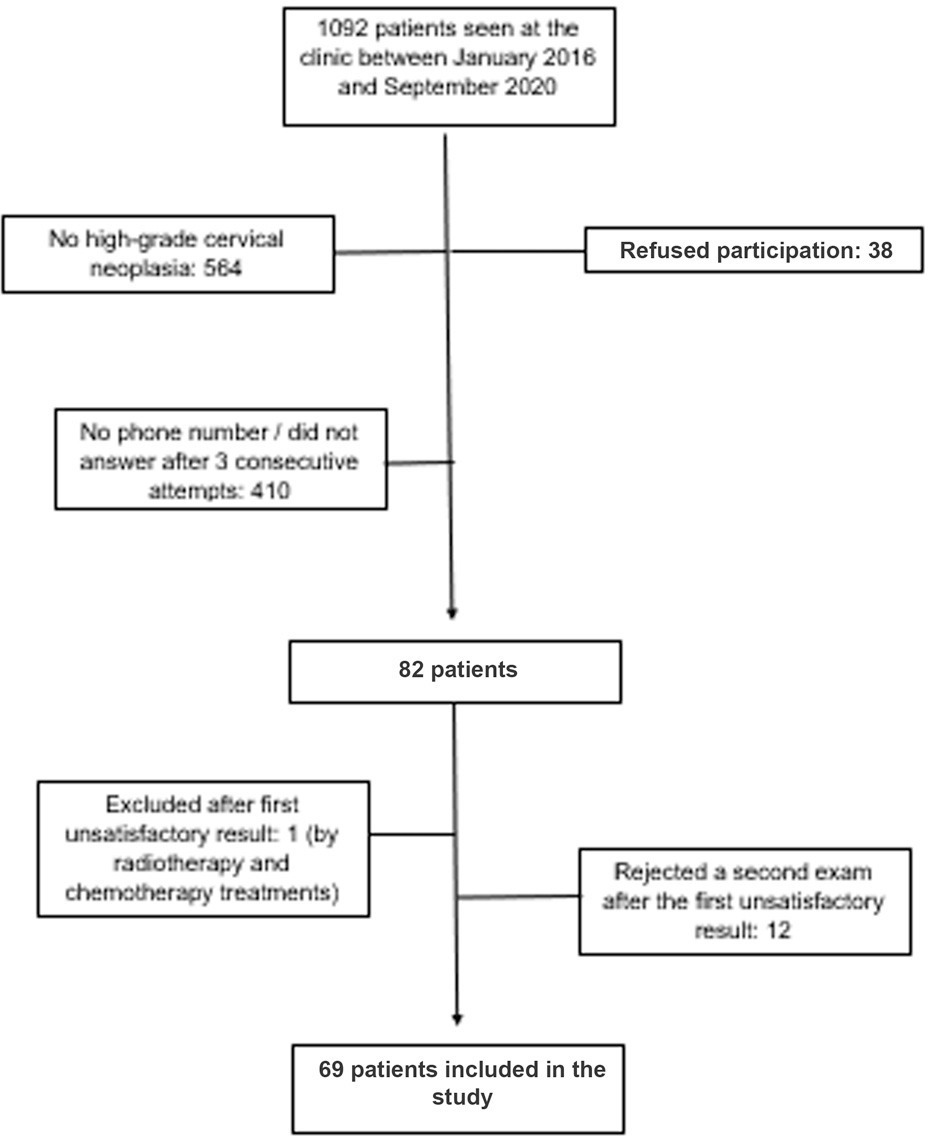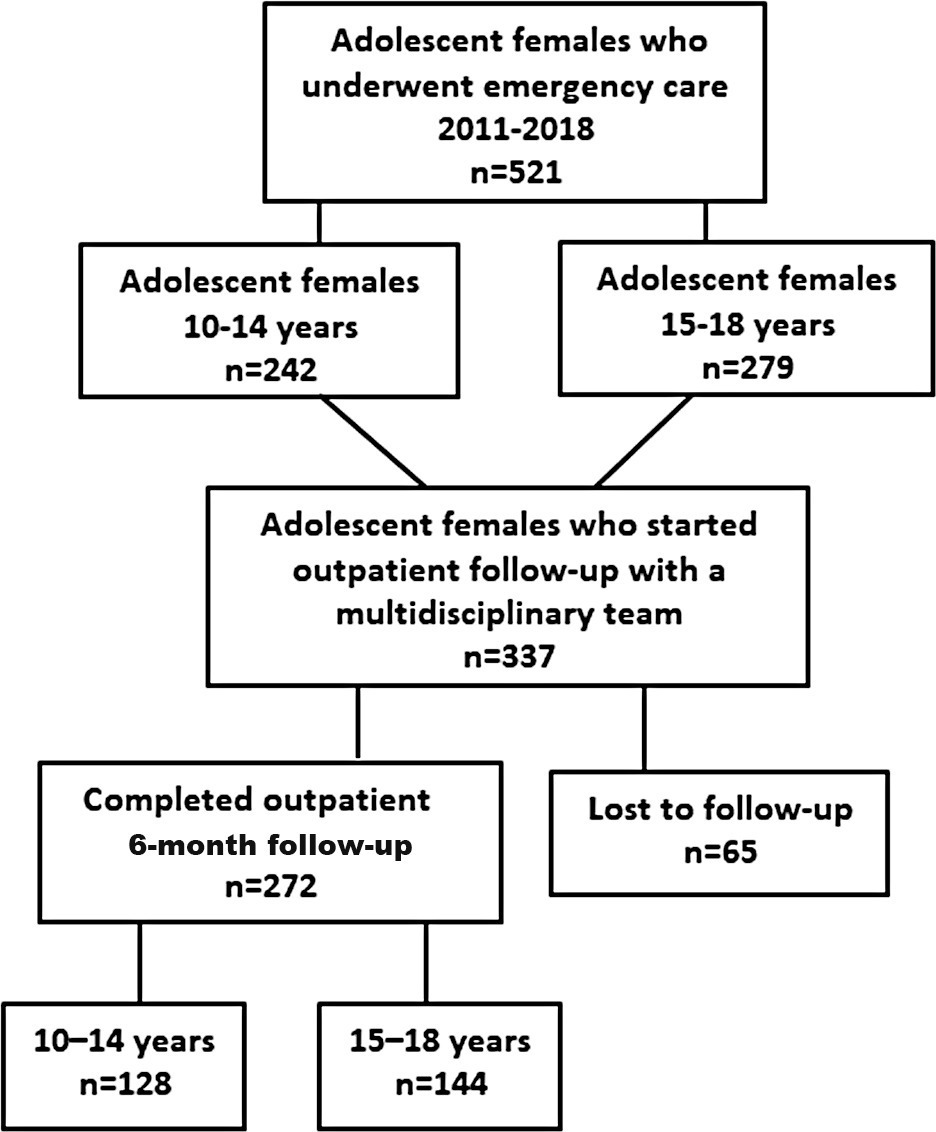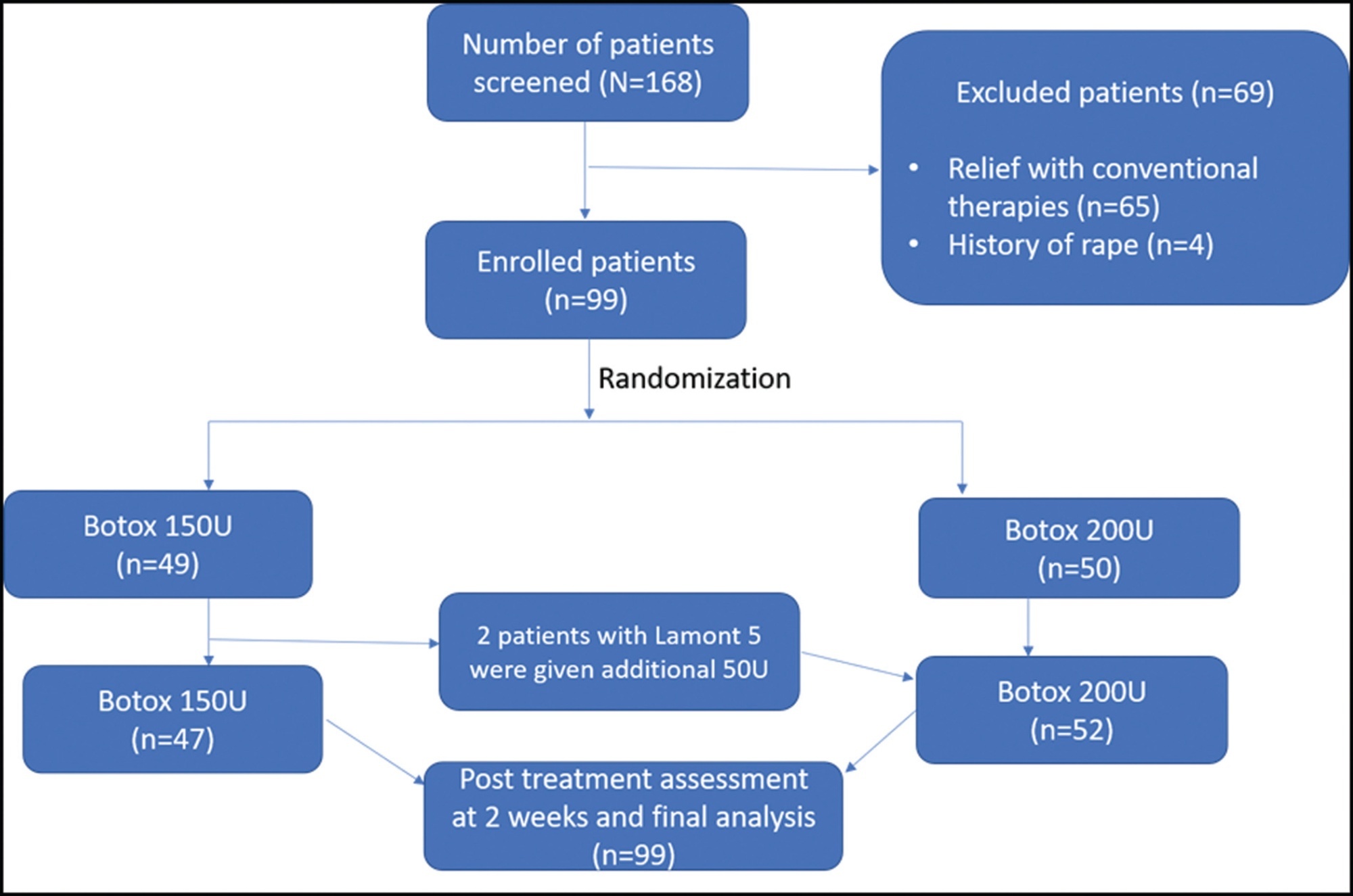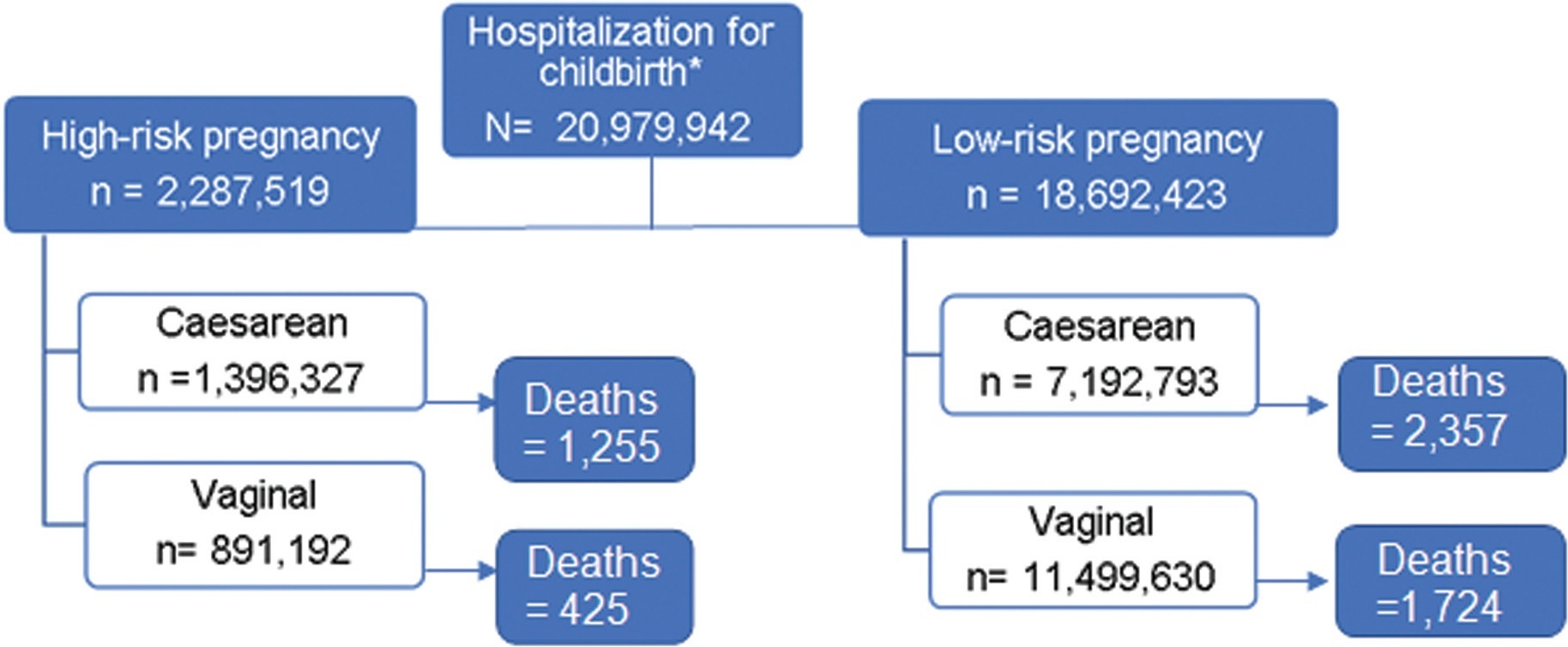Summary
Revista Brasileira de Ginecologia e Obstetrícia. 2022;44(7):678-685
To determine the prevalence and possible variables associated with anal intraepithelial neoplasia and anal cancer in immunocompetent women with high-grade cervical intraepithelial neoplasia.
A cross-sectional study involving immunocompetent women with a histological diagnosis of high-grade cervical intraepithelial neoplasia and cervical cancer, conducted between January 2016 and September 2020. All women underwent anal cytology and answered a questionnaire on characterization and potential risk factors. Women with altered cytology were submitted to anoscopy and biopsy.
A total of 69 women were included in the study. Of these, 7 (10.1%) had abnormal anal cytology results: (high-grade lesion, atypical squamous cells of undetermined significance, and atypical squamous cells, cannot exclude high-grade lesions: 28,5% each; low grade lesion: 14,3%). Of the anoscopies, 3 (42.8%) showed alterations. Of the 2 (28,5% of all abnormal cytology results) biopsies performed, only 1 showed low-grade anal intraepithelial neoplasia. The average number of pregnancies, vaginal deliveries, and abortions was associated with abnormal anal cytology. However, the highest mean regarding the cesarean sections was associated with normal cytology.
The prevalence of anal intraepithelial neoplasia was compatible with data from recent studies, especially those conducted in Brazil. Opportunistic screening for anal intraepithelial neoplasia in this high-risk population should be considered. Anal cytology is suitable for this purpose, due to its low cost and feasibility in public health services.

Summary
Revista Brasileira de Ginecologia e Obstetrícia. 2022;44(7):667-677
To compare the sexual violence suffered by women in early and late adolescence, the reactions triggered after the aggression, and the care provided.
A retrospective study in which we reviewed the medical records of 521 female adolescents treated by a multidisciplinary team at a reference hospital in the city of Campinas, state of São Paulo, Brazil. We analyzed sociodemographic variables, and those pertainin to the characteristics of the episodes of violence, the emergency care, and the physical and psychological reactions observed during the follow-up. For the analysis, the sample was divided into groups of early (10 to 14 years) and late (15 to 18 years) adolescence. We used the Chi-squared/Fisher Exact, Mann-Whitney, and Kruskal-Wallis tests to compare the groups; the level of significance adopted was 5%.
The early group (n= 242) contained more adolescents who were enrolled in school (p< 0.001), suffered more daytime aggressions (p= 0.031), in their residences (p< 0.001), by an aggressor with whom they were acquainted (p< 0.001), had greater need of legal protection (p= 0.001), and took longer to seek care (p= 0.048). Feelings of guilt, shame, and the perception of violence were similar between the groups. In the late group (n= 279), there was greater consumption of alcohol during the aggression (p= 0,005); they received significantly more prophylaxis treatments; reported more physical symptoms (p= 0.033), sleep disorders (p= 0.003), symptoms of anxiety (p= 0.045), and feelings of anguish (p= 0.011); and had more prescriptions of psychotropics (p= 0.005). Only 52% completed the 6-month follow-up, with no differences between the groups.
The age groups showed differences in the characteristics of the episodes of violence; early adolescents took longer to seek help, and the late group presented more intense symptoms and psychological worsening during the follow-up. Measures of prevention and specific care aimed at this population are needed.

Summary
Revista Brasileira de Ginecologia e Obstetrícia. 2022;44(7):654-659
Urodynamic studies (UDSs) are a set of tests that assess the storage and emptying of urine, and they are widely used by gynecologists and urologists in the management of urinary incontinence (UI), despite the discussion about its indications. The objectives of the present study were to verify whether UDSs are routinely used in the conservative and surgical approaches to female UI, their other clinical indications, and to compare the responses of Brazilian gynecologists and urologists.
The present is an opinion survey applied from August 2020 to January 2021 through a semistructured questionnaire about the clinical practice sent by e-mail to all participants. The responses were compared through statistical analyses.
Of the 329 participants, 238 were gynecologists (72.3%) and 91, urologists (27.7%). Most gynecologists (73.5%) and urologists (86.6%) do not request UDSs before the conservative treatment of UI; but UDSs are indicated in the preoperative period of anti-incontinence surgeries. Most participants request UDSs in the initial approach to overactive bladder (gynecologists: 88.2%; urologists: 96.7%), and the urologist has greater chance to request this study (odds ratio [OR] = 3.9). For most participants, it is necessary to request uroculture before the UDSs.
Most Brazilian gynecologists and urologists who participated in the present study do not request UDSs before the conservative treatment of UI, according to national and internacional guidelines, and often request it before the surgical treatment for female UI. The indication of this exam in the initial approach of idiopathic overactive bladder should be reviewed by the participants.
Summary
Revista Brasileira de Ginecologia e Obstetrícia. 2022;44(6):586-592
To determine if there is a correlation between body mass index (BMI) and climacteric symptoms in postmenopausal women.
The study sample was composed of 109 postmenopausal women with a mean age of 57 ± 8 years, mean body mass index (BMI) of 30 ± 6 kg/m2, and 8 ± 8 years after menopause. For the assessment of the climacteric symptoms, the Blatt-Kupperman Index (BKI), the Menopause Rating Scale (MRS), and the Cervantes Scale (CS) were used. Data analysis was performed through the Chi-squared test, analysis of variance (ANOVA) with the Bonferroni post hoc test, and multiple linear regression. The level of significance adopted was of p < 0.05. The statistical analyses were performed using the Statistical Package for the Social Sciences (IBM SPSS Statistics for Windows, IBM Corp., Armonk, NY, United States) software, version 26.0.
The multiple linear regression showed a positive association (p<0.01) between BMI values and menopause symptoms when adjusted for age and time after menopause in the 3 questionnaires used (BKI: B = 0.432; CS: B = 304; and MRS: B = 302). Regarding symptom scores, the obese women had higher mean scores (p<0.05) when compared to eutrophic women (BKI = 28 ± 10 and 20 ± 10; and MRS = 20 ± 10 and 13±7, respectively). In the Chi-squared analysis, 28% of obese women had severe symptoms and 46% had moderate symptoms, while only 1% and 46% of eutrophic women had these same symptoms.
There is an association between BMI and climacteric symptoms, and overweight or obese women have more intense and moderate symptoms than eutrophic women.
Summary
Revista Brasileira de Ginecologia e Obstetrícia. 2022;44(6):560-566
To identify the barriers to provide to women and adequately train physicians on therapeutic abortions in public hospitals in Peru.
Descriptive cross-sectional survey-based study. We invited 400 obstetrics and gynecology specialists from 7 academic public hospitals in Lima and 8 from other regions of Peru. Expert judges validated the survey.
We collected survey results from 160 participants that met the inclusion criteria. Of those, 63.7% stated that the hospital where they work does not offer abortion training. Most of the participants consider that the position of the Peruvian government regarding therapeutic abortion is indifferent or deficient. The major limitations to provide therapeutic abortions included Peruvian law (53.8%), hospital policies (18.8%), and lack of experts (10.6%).
Most surveyed physicians supported therapeutic abortions and showed interest in improving their skills. However, not all hospitals offer training and education. The limited knowledge of the physicians regarding the law and institutional policies, as well as fear of ethical, legal, and religious repercussions, were the main barriers for providing abortions.

Summary
Revista Brasileira de Ginecologia e Obstetrícia. 2022;44(9):845-853
To develop a protocol for hybrid low-risk prenatal care adapted to Brazilian guidelines, merging reduced face-to-face consultations and remote monitoring.
The PubMed, Embase, and Cochrane Library databases were systematically searched on telemedicine and antenatal care perspectives and adaptation of the low-risk prenatal care protocols recommended by the Ministry of Health and by the Brazilian Federation of Gynecology and Obstetrics Associations.
Five relevant articles and three manuals were included in the review, for presented criteria to develop this clinical guideline. We identified, in these studies, that the schedule of consultations is unevenly distributed among the gestational trimesters, and ranges from 7 to 14 appointments. In general, the authors propose one to two appointments in the first trimester, two to three appointments in the second trimester, and two to six appointments in the third trimester. Only three studies included puerperal evaluations. The routine exams recommended show minimal variations among authors. To date, there are no validated Brazilian protocols for prenatal care by telemedicine. The included studies showed that pregnant women were satisfied with this form of care, and the outcomes of interest, except for hypertensive diseases, were similar between the groups exposed to traditional and hybrid prenatal care.
The presented guideline comprises the Ministry of Health recommendations for low-risk prenatal care and reduces exposure to the hospital environment and care costs. A randomized clinical trial, to be developed by this group, will provide real-world data on safety, effectiveness, satisfaction, and costs.

Summary
Revista Brasileira de Ginecologia e Obstetrícia. 2022;44(9):854-865
To comparatively evaluate the outcome of treatment with 150 versus 200 units (U) of botulinum toxin in achieving pain-free intercourse and relieving muscle contraction in order to allow gynecological examination.
In this comparative prospective observational study, 99 patients with vaginismus were treated with botulinum toxin injections from September 2016 to August 2021. Diagnosis and grading of vaginismus severity were assessed using a Female Sexual Function Index (FSFI) questionnaire. Under local or general anesthesia, botulinum toxin diluted with preservative-free saline (150 U and 200 U) was injected into, above, and below the right and left bulbospongiosus muscle and the lateral submucosal areas of the introitus and perineal body using an insulin syringe. Patients were recalled after 2 weeks, and the postoperative outcome was recorded using a similar preoperative questionnaire.
Overall, the mean age of patients was 30.2 years. The baseline and clinical characteristics were comparable between the 2 groups (p > 0.05). Significant improvements were seen in the pain and anxiety scores of finger penetration, dilator use, intercourse, and cotton swab in individual groups. The intergroup comparisons between 150 U and 200 U of Botox were not statistically significant (p > 0.05).
Low-dose Botox (150 U) is equally effective as high dose Botox injections (200 U) in vaginismus patients. Therefore, Botox-150 U can be used to treat vaginismus as an alternative to high doses of the same substance.

Summary
Revista Brasileira de Ginecologia e Obstetrícia. 2022;44(8):740-745
To assess the possible impact of the COVID-19 pandemic on maternal mortality among admissions for childbirth in 2020 in relation of the last 10 years.
An ecological study with pregnant women who underwent hospital births at the Brazilian unified public health service (SUS, in the Portuguese acronym) in Brazil from 2010 to 2020. The mortality among admissions for childbirth was obtained based on the number of admissions for childbirth with reported death as outcome divided by the total number of admissions. The underlying gestational risk and route of delivery were considered based on the national surveillance system. The average mortality for the period between 2010 and 2019 (baseline) was compared with the rate of deaths in 2020 (1st pandemic year); the rate ratio was interpreted as the risk of death in 2020 in relation to the average of the previous period (RR), with 95% confidence intervals (CIs).
In 2020, the 1st year of the COVID-19 pandemic, 1,821,775 pregnant women were hospitalized for childbirth and 651 deaths were reported, which represents 8.7% of the total hospitalizations and 11.3% of maternal deaths between 2010 and 2020. There was an increase in maternal mortality after births in 2020 compared with the average for the period between 2010 and 2019, specially in low-risk pregnancies, both in vaginal (RR = 1.60; 95%CI:1.39–1.85) and cesarean births (RR = 1.18; 95%CI:1.04–1.34).
Maternal mortality among admissions for childbirth according to SUS data increased in 2020 compared with the average between 2010 and 2019, with an increment of 40% in low-risk pregnancies. The increase was of 18% after cesarean section and of 60% after vaginal delivery.
